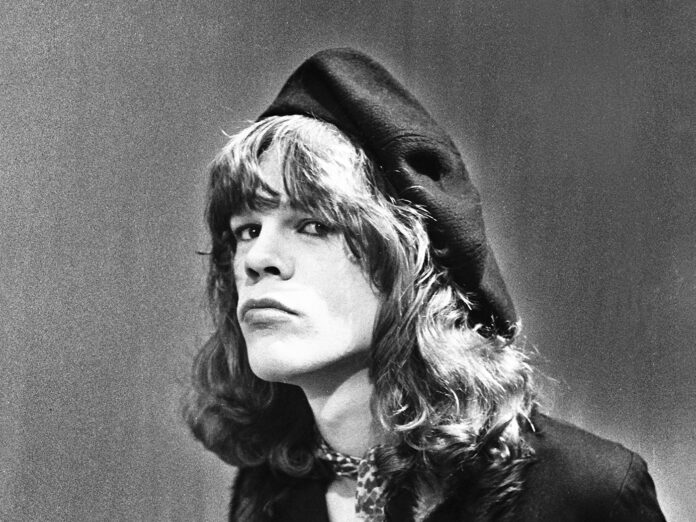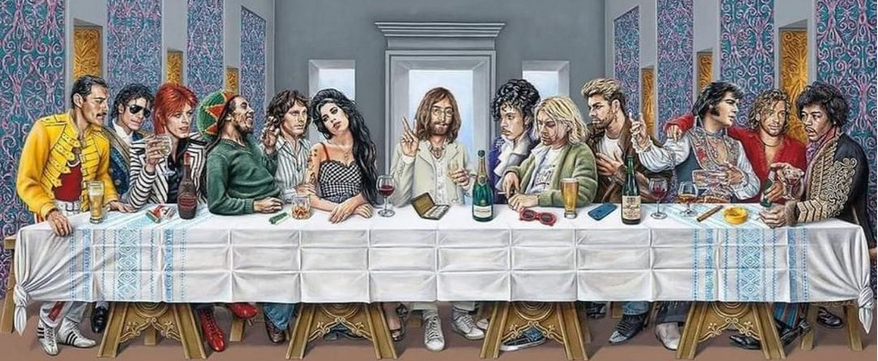
David Johansen: A Punk Pioneer and Rock Chameleon
Early Life and Musical Beginnings
David Johansen was born on January 9, 1950, in Staten Island, New York City. Raised in a working-class family, his father was an insurance salesman with a background in opera, and his mother was a librarian. Growing up, Johansen was exposed to a diverse range of music, from opera to rock and roll, which would later influence his eclectic style.
As a teenager, Johansen was drawn to the burgeoning rock music scene. He sang in local bands and became fascinated with the raw energy of rhythm and blues, early rock, and soul. By the late 1960s, he had fully immersed himself in the underground music culture of New York City, which was pulsating with experimentation and rebellion.
Formation of the New York Dolls
In 1971, David Johansen became the frontman of the New York Dolls, a band that would go on to be one of the most influential proto-punk groups in history. The original lineup included guitarist Johnny Thunders, bassist Arthur “Killer” Kane, guitarist Sylvain Sylvain, and drummer Billy Murcia. The Dolls were unlike any other band at the time, with their flamboyant fashion, teased hair, and androgynous style. They took inspiration from glam rock pioneers like David Bowie and T. Rex, but with a much grittier, streetwise attitude.
Their live performances were electric, filled with swagger and unpredictability. While mainstream audiences found them shocking, they quickly developed a devoted cult following. The Dolls’ combination of raw rock and roll, blues-infused riffs, and defiant lyrics laid the groundwork for the punk explosion that would follow later in the decade.
The Rise and Fall of the New York Dolls
The New York Dolls released their self-titled debut album in 1973, produced by Todd Rundgren. It featured now-classic tracks like Personality Crisis, Trash, and Jet Boy. Despite its influence, the album failed to achieve commercial success, partly due to the band’s controversial image and the music industry’s reluctance to embrace them.
.
.
Their second album, Too Much Too Soon (1974), produced by George “Shadow” Morton, took a more polished approach, but it too struggled commercially. Internal conflicts, drug use, and the tragic death of drummer Billy Murcia in 1972 took a toll on the band. By 1976, after a tumultuous tour and a brief association with Malcolm McLaren—who would later manage the Sex Pistols—the Dolls disbanded.
Despite their short-lived career, the New York Dolls’ impact was immeasurable. They influenced the punk movement, inspiring bands like the Ramones, the Sex Pistols, and The Clash. Their fearless approach to music and image would echo through rock history.
Solo Career and Reinvention
Following the dissolution of the Dolls, Johansen embarked on a solo career. He released his debut album, David Johansen, in 1978, which leaned towards a more traditional rock sound compared to the Dolls’ raw edge. He followed this with albums like In Style (1979) and Here Comes the Night (1981), which incorporated elements of new wave, R&B, and pop.
While he never achieved mainstream superstardom, Johansen became a respected figure in the rock world. He continued touring and developed a reputation as a dynamic live performer. Throughout the early 1980s, he released several more albums, including Live It Up (1982) and Sweet Revenge (1984).
The Birth of Buster Poindexter
By the mid-1980s, David Johansen once again reinvented himself, this time as Buster Poindexter, an exaggerated lounge-lizard persona that allowed him to explore different musical avenues. As Poindexter, he embraced jazz, calypso, and big band sounds, a stark contrast to his punk roots.
His 1987 single Hot Hot Hot became a surprise hit, a song that would go on to be played at parties, weddings, and sporting events worldwide. The success of the Poindexter persona introduced Johansen to a wider audience, including those unfamiliar with his New York Dolls legacy. He continued to perform in this character throughout the late ’80s and early ’90s, becoming a mainstay on late-night television and cabaret circuits.
Despite the commercial appeal of Buster Poindexter, Johansen never abandoned his rock and roll roots. He often spoke of the character as an artistic exploration rather than a permanent shift.
Acting Career
David Johansen’s charisma and stage presence naturally translated into acting. He appeared in several films throughout the 1980s and ’90s, most notably as the Ghost of Christmas Past in the 1988 holiday comedy Scrooged, starring Bill Murray. His portrayal of the wisecracking, cigar-smoking cab driver-turned-ghost was one of the film’s most memorable performances.
He also appeared in films such as Married to the Mob (1988), Let It Ride (1989), and Freejack (1992). In addition to movies, he made television appearances, including guest roles on Saturday Night Live and Tales from the Darkside. His ability to shift seamlessly between music and acting further showcased his versatility as an entertainer.
Reunion of the New York Dolls
In 2004, Morrissey, a longtime fan of the New York Dolls, invited David Johansen to reunite with surviving members Sylvain Sylvain and Arthur Kane for a performance at the Meltdown Festival in London. The reunion was an emotional and triumphant return for the Dolls, reigniting interest in their music.
Sadly, shortly after the performance, Arthur Kane passed away. However, Johansen and Sylvain carried on, releasing a new album, One Day It Will Please Us to Remember Even This, in 2006. The revived Dolls continued touring and released two more albums, Cause I Sez So (2009) and Dancing Backward in High Heels (2011).
Despite facing criticism from purists who felt the new Dolls lineup lacked the original fire, Johansen and company continued to deliver high-energy performances, proving that their music remained as vital as ever.
Later Years and Personal Life
David Johansen’s personal life saw him married three times. He was briefly married to Cyrinda Foxe in the 1970s, followed by a long marriage to photographer Kate Simon from 1983 to 2011. In 2013, he married artist Mara Hennessey. He also had a daughter, Leah Hennessey, who pursued a career in the arts.
As he grew older, Johansen continued to perform and remained a fixture in the New York music scene. He hosted a SiriusXM radio show, David Johansen’s Mansion of Fun, where he showcased his vast knowledge and love of music from all genres.
In the 2010s, he became a frequent presence at small clubs and intimate venues, delivering blues and folk-infused sets. He embraced his role as a rock elder statesman, respected for his contributions to punk, glam, and beyond.
Health Challenges and Death
In 2020, David Johansen was diagnosed with stage four cancer and a brain tumor. Despite his health struggles, he remained engaged with his fans and continued to make public appearances when possible.
In late 2024, he suffered a fall that resulted in a broken back, further complicating his condition. A fundraiser was launched to support his medical expenses, reflecting the deep admiration his fans and peers had for him.
On February 28, 2025, Johansen passed away at his Staten Island home at the age of 75, surrounded by family. His death marked the end of an era, but his influence would live on in the countless artists he inspired.
.

.
Legacy
David Johansen’s legacy is one of fearless creativity and reinvention. As the frontman of the New York Dolls, he helped pave the way for punk rock, glam rock, and alternative music. His ability to transform—from punk provocateur to lounge singer to folk artist—showcased his boundless artistic spirit.
His impact on music can be seen in generations of rockers who followed in his footsteps, from punk legends to modern indie artists. Whether belting out gritty rock anthems, crooning as Buster Poindexter, or entertaining audiences with his larger-than-life personality, Johansen remained an artist who never played by the rules.
Check out David Johansen on Amazon by clicking here.
Check out the New York Dolls on Amazon by clicking here.
If you found this interesting please share it with your friends and family, and check out some of our other articles on Musicians who Died in 2025.
.

